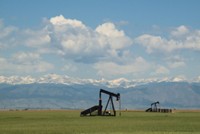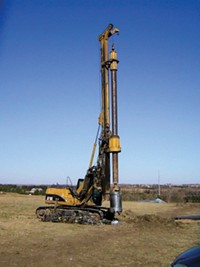Advertisement
Grab your lab coat. Let's get started
Welcome!
Welcome!
Create an account below to get 6 C&EN articles per month, receive newsletters and more - all free.
It seems this is your first time logging in online. Please enter the following information to continue.
As an ACS member you automatically get access to this site. All we need is few more details to create your reading experience.
Not you? Sign in with a different account.
Not you? Sign in with a different account.
ERROR 1
ERROR 1
ERROR 2
ERROR 2
ERROR 2
ERROR 2
ERROR 2
Password and Confirm password must match.
If you have an ACS member number, please enter it here so we can link this account to your membership. (optional)
ERROR 2
ACS values your privacy. By submitting your information, you are gaining access to C&EN and subscribing to our weekly newsletter. We use the information you provide to make your reading experience better, and we will never sell your data to third party members.
Environment
Air emissions control requirements eased for oil, gas drilling in U.S.
by Jeff Johnson, special to C&EN
March 8, 2018
| A version of this story appeared in
Volume 96, Issue 11
The U.S. Environmental Protection Agency has taken several pollution-related actions that it says will save the oil and natural gas drilling industry $14 to $16 million over the next 15 years.
On March 1, Bill Wehrum, a top EPA air regulation official and former oil industry attorney, said the changes were necessary “to provide regulatory certainty to one of the largest sectors of the American economy and avoid unnecessary compliance costs to both covered entities and the states.”
Most notably, EPA proposes to suspend a 2016 guidance intended to encourage oil and gas drilling operators and state regulators to apply leak control technologies to limit emissions of volatile organic compounds (VOCs). Use of the technologies is an option to help industry and state regulators reduce levels of health-harming ozone in regions unable to meet national air quality standards. When it issued the guidance, EPA estimated that it would prevent loss to the environment of 58,000 metric tons of VOCs from drilling sites per year.
A side benefit to using the technologies is that they would also limit leakage of methane, a powerful greenhouse gas. EPA estimated that some 180,000 metric tons of methane would be collected annually if the guidelines were implemented.
The oil and gas industry has strongly opposed the guidelines, even though they do not mandate use of leak control technologies.
Studies by the Environmental Defense Fund (EDF) found some 25 million people mostly in Pennsylvania and Texas would be adversely affected by the change. These people live in areas that are out of compliance with ozone air pollution standards because of oil and gas drilling.
“I was surprised by the withdrawal,” says Matt Watson, associate vice president for EDF’s Climate & Energy Program. “These are mostly off-the-shelf technologies, such as better equipment and valves. States and companies don’t have to use them, but their use gives them an option to meet air reduction requirements. This is a tool to provide flexibility, something the administration said it wanted.”
EPA also plans to suspend requirements issued under the Obama administration that drillers repair leaking components during emergency shutdowns and that well-site emissions in Alaska be closely monitored.






Join the conversation
Contact the reporter
Submit a Letter to the Editor for publication
Engage with us on Twitter